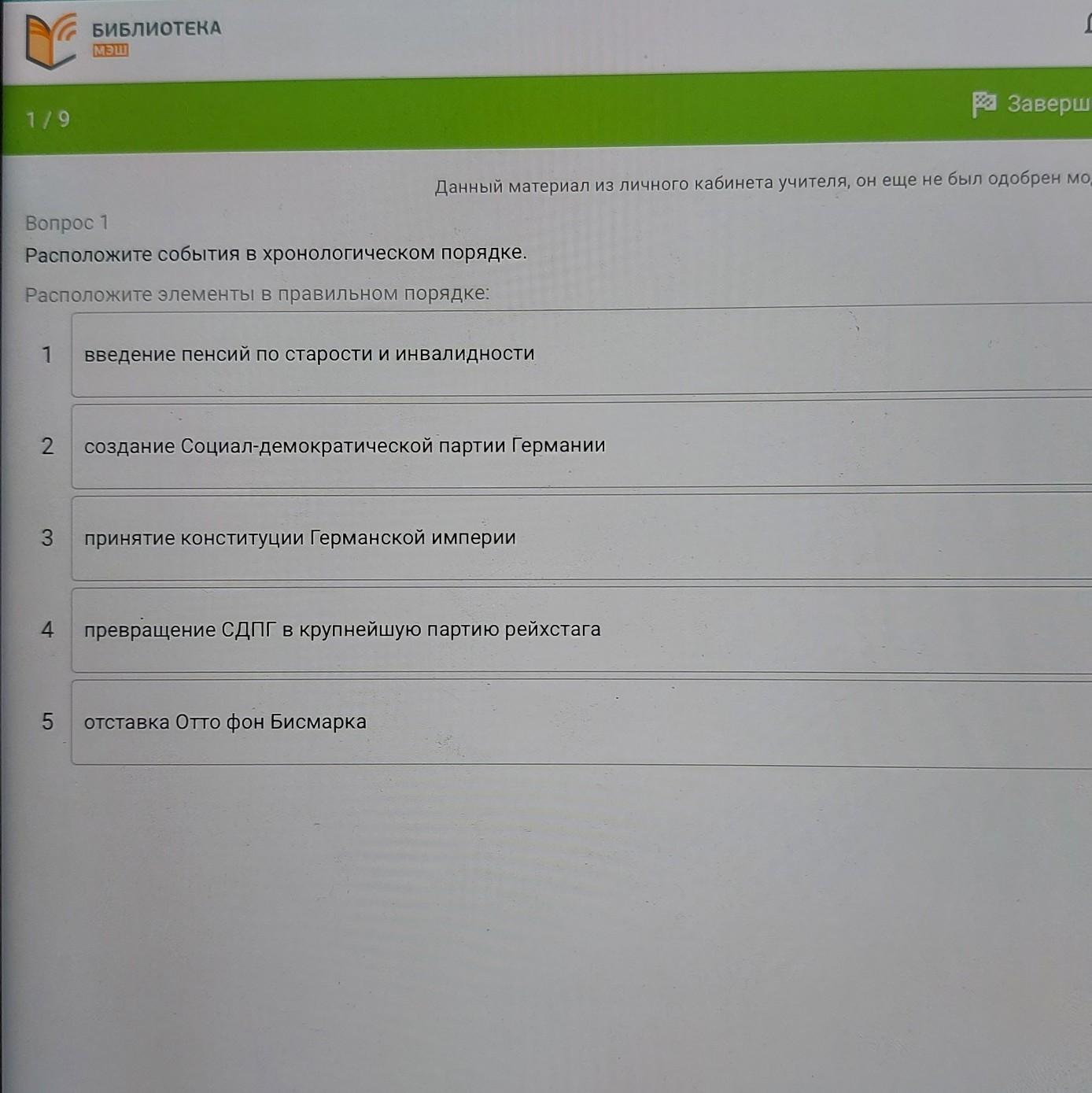Предмет: История,
автор: psspdococi
ОТДАЮ ВСЕ БАЛЛЫ!СРОЧНО ПОМГИТЕ!НЕПРАВИЛЬНЫЙ ОТВЕТ БАН
Приложения:

Ответы
Автор ответа:
0
принятие конституции Германской империи. (1871 год, 16 апреля)
создание Социал-демократической партии Германии. (1863 год, 23 мая)
превращение СДПГ в крупнейшую партию Рейхстага. (1869 год)
введение пенсий по старости и инвалидности. (1889 год)
отставка Отто Фон Бисмарка (1890 год)
zaslankabiev940:
Это было все в открытом доступе, чел
Похожие вопросы
Предмет: Биология,
автор: nazarovaarina125
Предмет: Русский язык,
автор: AB123456
Предмет: Русский язык,
автор: Машаоооооо
Предмет: Английский язык,
автор: malvina192